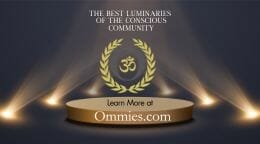7 Strategies to Transform a Broken Heart

Everybody suffers from a broken heart at some point in their lives.
Transforming a Broken Heart
By Ronald Alexander
How can you mend a broken heart?
How can you stop the rain from falling down?
How can you stop the sun from shining?
Please help me mend my broken heart and let me live again.
– the Bee Gee’s 1971 Hit Song
When we suffer a deep loss or trauma our broken hearts can literally feel that they have been shattered into a million pieces. Or we feel that our heart has broken open and we are bleeding metaphorically. At times it can even be difficult to breathe. Our heart is both a living organ that is our life source as well as an emotional mind/body metaphor referred to when we experience heartache and sorrow. It’s as if the heart that beats to an electrical energy wave becomes short-circuited and burns out, flares out or is broken into many tiny pieces. After the initial shock of a loss, many feel the need to push aside their grief lest it overwhelms them with its intensity. This is understandable, but the longer you avoid your pain and attempt to push it away, the more difficult it will be to break out of the paralysis. Just as birds are drawn to breadcrumbs on the ground, the pain will keep returning after you shoo it away. When I work with my patients in the initial stage of sorrow I suggest that at first they just sit with their pain and grief, simply noticing it as if they are sitting on a riverbank watching these heavy feelings float downstream. During this time many of them ask, “Why is this happening to me?” While it is impossible for us to see the big picture, I suggest to them that when they are ready to use this experience to honor themselves by learning and growing from it. A translation of a Rumi poem says, “When your heart breaks (open), journey deep inside.” So if you are going to be courageous and take that journey it’s helpful to be guided by the following seven steps for overcoming and transforming a broken heart.
7 Strategies to Transform Your Broken Heart
Step 1: Struggle with Denial
Denial is the first round of defense that we immediately enter into like the first chamber in the heart that breaks. In this inner chamber we face the demons of trying every which way to not accept the loss. It’s as if a visitor with bad news has entered our home and we try to push him/her back outside so we don’t have to listen to the painful message.
Step 2: Acknowledging your Brokenness
You must start to acknowledge to yourself that your heart has been broken by someone, something or some event. Step into the experience of attempting to tolerate the unbearable quality of this sorrow. I say “attempt” to deal with the sorrow as you must acknowledge that your pain in order over time to learn to manage, handle, and heal it.
Step 3: Overcoming Rationalization
We rationalize this is not happening, it can’t be so, it’s only a terrible nightmare, things will change and everything will be as it was! The denial of pain. We pray to God that if this experience is taken from us we will repent, we will change, we will dedicate our lives to a great cause. Anything but to feel this deep, aching wound of hurt and sorrow. So often when our heart is breaking we want someone, anyone to tell us what to do, or where to go, or how to instantly heal.
Step 4: Surrender
The Beatles insightful song Tomorrow Never Knows says, “Turn off your mind, relax and float downstream ….That you may see the meaning of within.” The step of entering into the chamber of Surrender is an essential stage in order to allow the self to begin the arduous process of mending a broken heart. When we surrender, we enter the state of not knowing and not doing. Since we do not know just how long the journey will take it is helpful to accept what I write about in my book Wise Mind Open Mind that we never fully get over a loss but instead we learn to navigate through it. “Taking as long as it takes” is a phrase I use with my patients while they are in this stage.
Step Five: Acceptance
It takes great courage to pull yourself up off the floor, bed, or couch and get back into the world when your heart is broken. Acceptance gives us the first few steps we need to begin to slowly scratch and claw our way back into the land of the living. One of the most painful aspects of when I had a broken heart was going out to the movies or dinner or on a vacation and all I ever saw was couples or families but still we need to exercise the organ of the emotional heart with fierce grace in order to step forward and go back outside into the world of possibilities.
Step Six: Embrace the Now
The Buddha said what is past is now dead and gone; the past is the past, the present is now, and the future is yet to arrive. When grieving we tend to live in the past reliving the trauma or memories of the one we lost. Now memories are important to maintain but within reason. In order to take the next step, we must embrace the present to manifest the future. One of the easiest and most effective techniques that I recommend to my patients is to develop a mindfulness meditation practice (see the video below for tips on how to meditate). By practicing mindfulness we can learn to slowly tolerate, pace the painful feelings, and slow down the afflictive and repetitive thought patterns. In Wise Mind, Open Mind I have a specific meditation to overcome a broken heart. Mindfulness is both an ancient and modern nonsectarian method for teaching us to follow our breath in and out and to relax, to let go of the pain and eventually release and transform it into vitality, acceptance, and equanimity. Other methods to help one become more present are yoga, Tai Chi, walks in nature, jogging or visiting museums.
Step Seven: Create a New Future
There is a field of thinking within positive psychology that says the way through pain includes becoming your own architect and actively engaging and involving yourself in the planning of a new future. The victim in us will want to remain on the floor curled up in agony, wishing to avoid any future painful experiences that life may present to us. One who is engaged and empowered realizes and accepts that the past is the past and all we have now is the present moment and the future. It’s all in the next breath in and the next breath out and creating in your mind’s eye a future storyline for yourself. Dare to dream and be wild with your imagination. Have the courage to dream any positive, loving, creative future with no bounds. Remember after Death comes Rebirth!
It’s your storyline you are creating, like writing the next chapter of your life in a novel. But in your story, I challenge you to JUMP into the water, catch the next wave and maybe you will just be surprised and delighted to experience yourself riding that new wave with confidence, joy, and possibility!!!
You will also enjoy Mindfully Change Your Painful Memories and How Grief Reveals the Light
About the Author
Ronald Alexander, PhD is a leadership consultant, psychotherapist, international trainer, and the Executive Director of the OpenMind Training Institute, a leading edge organization that offers personal and professional training programs in mind-body therapies, transformational leadership, and mindfulness. He is the author of the widely acclaimed book Wise Mind, Open Mind: Finding Purpose and Meaning in Times of Crisis, Loss and Change that provides practical and innovative applications to help us through today’s challenging times and upon which this article is based. To learn more visit www.RonaldAlexander.com.
OMTimes Magazine is one of the leading on-line content providers of positivity, wellness and personal empowerment. OMTimes Magazine - Co-Creating a More Conscious Reality








